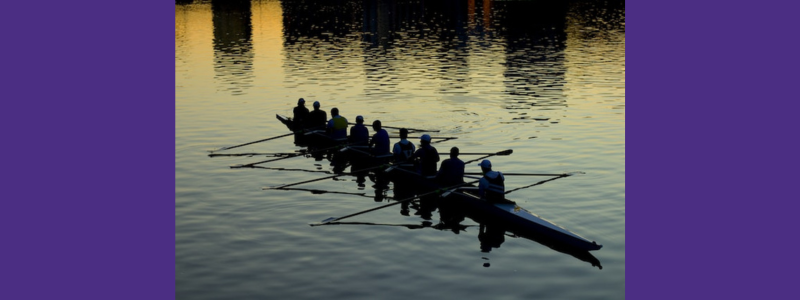
Photo credit: Mitchell Luo on Unsplash
Teamwork, resilience and excellence
UW BioE rowers share their musings about rowing and bioengineering
By Arden Clise
Rowers say there is magic in eight oars plunging into and exiting the water at the same time in a crew shell. As the boat sluices through the water, scullers feel the graceful power of being in sync with their teammates – the sound of the squeaking oar gates, the swish of the seat on the slide runners and the swirling eddies made by the oars creating a focused meditation.
While not a well-known sport, crew is one of the most physically demanding and disciplined pursuits with a storied history. In 1936, the UW men’s rowing team won the 1936 Olympic gold medal against all odds and inspired a popular book entitled Boys in the Boat by Dan Brown. With the impending release of the movie adaptation, a few past and present UW Bioengineering rowers share what they love about rowing and how it complements bioengineering
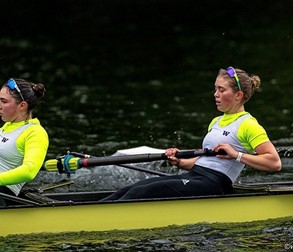
Photo credit: Alika Jenner
Molly Wiser
Junior BioE undergraduate student Molly Wiser joined the UW crew team as a freshman because she wanted to try something new and work together with a group of people. Two and a half years into the sport Molly says, “I like the aspect of continuous growth, and that no matter what levels or podiums we achieve as a team or individually, there is this constant drive to keep showing up every day and getting even better than the day before.”
The 20 hour a week practice schedule makes it challenging to fit in schoolwork, especially bioengineering, which requires a lot of attention. Molly found being present in whatever she is doing, whether it’s crew practice or being in class and studying, is important in balancing the two disciplines. “I’ve really tried to nail down that if I’m studying, I’m not on my phone, or talking with friends and surfing the web, it just makes it easier to utilize that limited time,” Molly says.
Crew and bioengineering are both rigorous pursuits but as Molly states they can both have high rewards. “You will put a lot of work into engineering and rowing and not see a lot of returns at first, and you have to kind of see the light at the end of the tunnel and keep going,” she says.
In her studies, Molly is focused on her junior core coursework where she is focused on the second fluid mechanics course. She works in the ShapeLAB, run by Professor Anitha Pasupathy in the Department of Biological Structure, where she is researching neural stimuli and partial shape occlusions. Molly hopes she will have a specific area of interest determined by the time she participates in the senior year capstone project. In the meantime, she is looking for a summer internship or lab position to gain experience in 2024 when she isn’t at rowing practice or competing.
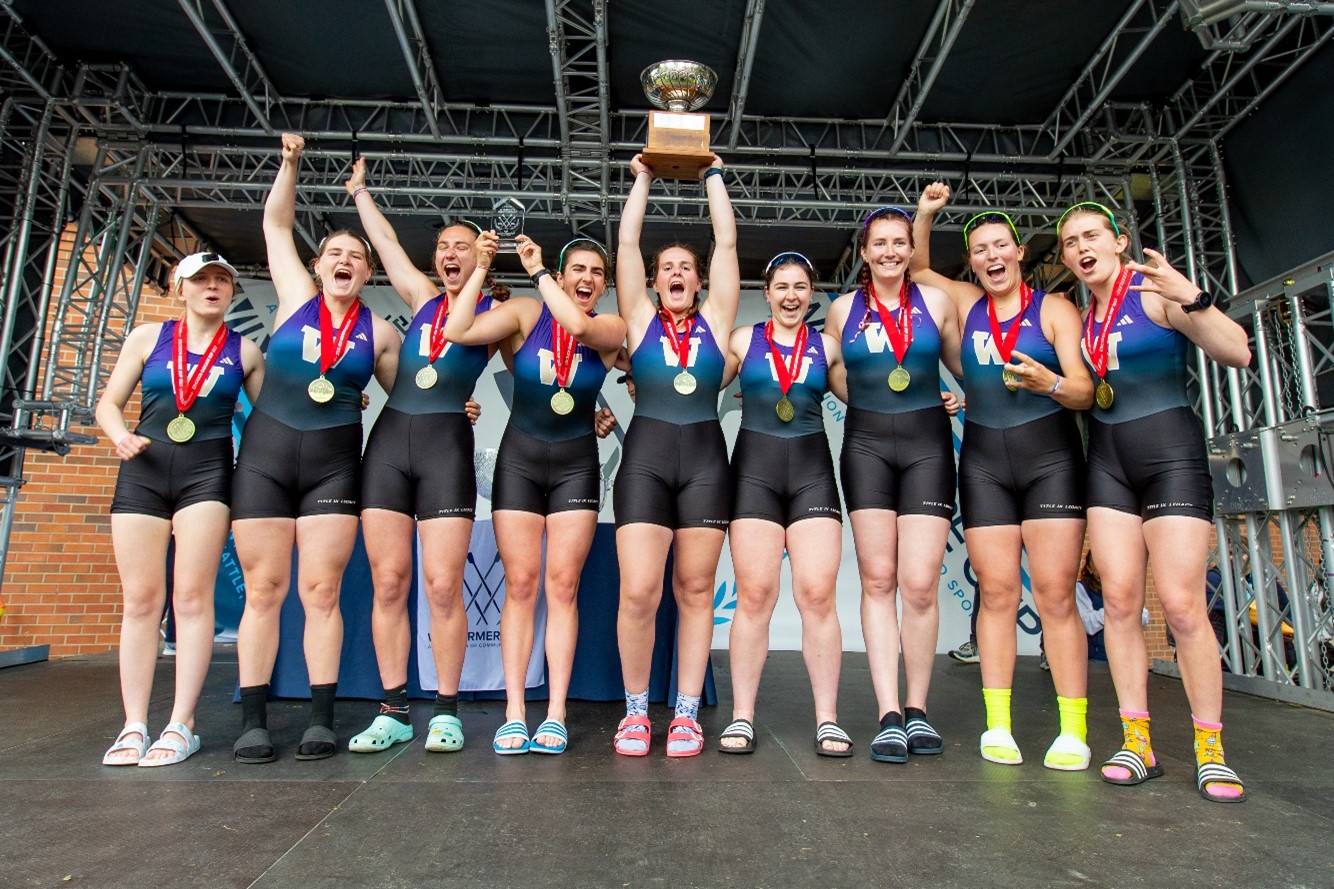
Members of the UW Women’s crew team celebrating their win at the 2023 Windermere Cup. Photo credit: Redbox Photos.
Claire Marion
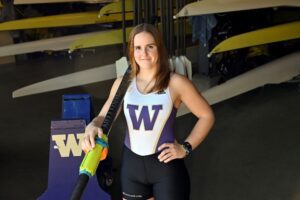
Photo credit: Alika Jenner
Recent BioE grad, Claire Marion (B.S. ’22) rowed for the UW from 2018 to 2022 and was profiled in an article about her time as a rower while a BioE student. She was named to the Pac-12 Academic Honor Roll twice.
“Rowing at UW taught me a LOT about myself,” Claire says. “For one, I learned how to effectively manage my time in order to balance a challenging bioengineering course load with multiple practices per day. I also learned how to be gritty and push beyond any barriers keeping me from performing at my best, both on the water and in the classroom. But most importantly, rowing at UW taught me the true importance and value of teamwork. I learned that if I am working alongside a group of people who share a common goal and have an unwavering belief that we have what it takes to achieve it, the sky is the limit.”
Claire is currently working as a Design Associate for Carlsmed, a San Diego, Calif. based company that specializes in producing patient specific implants for the lumbar spine. She works with 3D models of patient anatomy to design personalized spinal implants using CAD software.
Philip Walczak
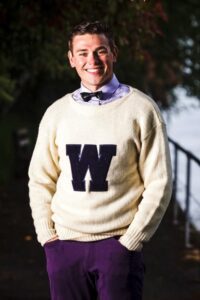
Photo credit: Chris Wilson
Oral Health Ph.D. candidate Philip Walczak rowed for the UW as a Bioengineering undergraduate from 2012 to 2017. His rowing career began in high school as a freshman.
What Philip most loved about rowing was “the feeling of a boat that clicks – what is referred to in The Boys in the Boat as “the swing,” he says. The hardest part for Philip? The endless hours of training to prepare for the start of spring competitions.
When asked about the similarities between studying bioengineering and rowing Philip used the words, “Teamwork, resilience and excellence.” He chose the word teamwork because many bioengineering problems involve a large interdisciplinary group that must work together to solve a problem, like how rowers must perform as a team to be successful in a race. “Resilience in that many bioengineering problems are not easily solvable and require a resilient personality to push through the many challenges that arrive, just as boats must move past their bad rows and work towards improving,” Philip says. He chose the word excellence because bioengineering “requires a wide breadth of knowledge to solve specific problems as well as attention to detail,” much like how rowers must participate in all aspects of practice and focus on every stroke to excel on race day.
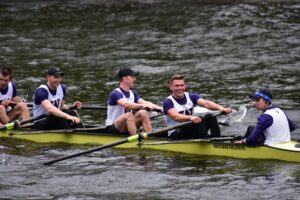
Philip Walczak, second from right, and fellow rowers. Photo credit: Dariusz Walczak
Philip works in the Giachelli Lab, where he focuses on understanding the role of a phosphate transporter, PiT-2, in bone and tooth development and mineralization. He is interested in harnessing regenerative processes in dental pulp to stop the progression of dental caries (cavities) and improve treatment outcomes.
UW BioE also has a few faculty members who have rowed or currently row.
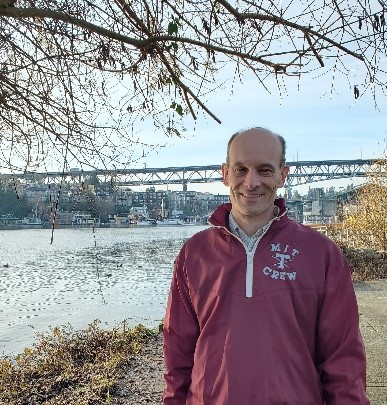
Chris Neils
Teaching Professor Chris Neils rowed as an undergraduate at MIT for four years. While in the Navy he rowed another four years at Alexandria Community Rowing in Alexandria, Va. Chris’s father encouraged him to switch from football to crew saying he thought Chris would love the sport. And indeed, he did. Of the pursuit, Chris says, “Rowing is the quintessential New England sport. Being on the Charles River at sunset alongside boats from four other colleges is magical. You feel like part of the history of the sport. Plus, it gives you some of the best riverfront views in the city. UW rowers on Lake Washington must feel the same thing.”
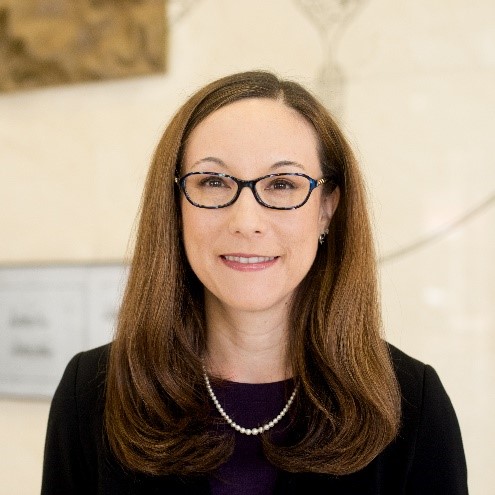
Shelly Sakiyama-Elbert
Shelly Sakiyama-Elbert, Bioengineering professor and Vice Dean of Research and Graduate Education for the UW School of Medicine, rowed for three and a half years as an undergraduate at MIT in Boston, Mass. Shelly shares that she loves, “the rhythm of rowing and the power when the crew clicks and is rowing as one – it’s magical. You have to work as a team to make the boat go fast, so the friendships are a special bond.”
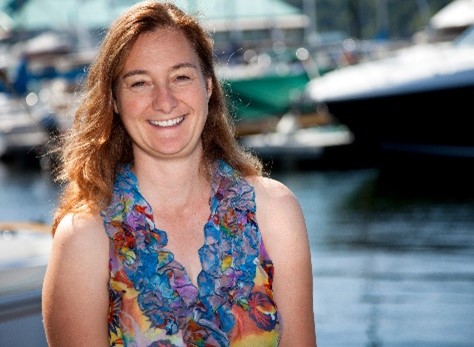
Marta Scatena
Bioengineering Research Associate Professor Marta Scatena started rowing eight years ago when her daughter took up the sport in high school. She gets out on the water three times a week. When asked about the similarities between rowing and bioengineering Marta says, “Definitely the biomechanics of the stroke with the design of the boat. You need to have the boat set for your body type and physical ability to reach maximal efficiency.”
Author’s note: I am a proud former member of UW crew where I rowed in 1983. Prior to transferring to the UW, I rowed for two years at Lewis and Clark College. It was an incredibly exciting time for UW women’s crew with several national championship awards in the 1980s, including one in 1983 for the women’s Varsity 8+. I have many fond memories of my time rowing at the UW and recall with awe that feeling of “swing” that so many rowers speak of when everyone in the boat is moving in sync propelling the shell forward.
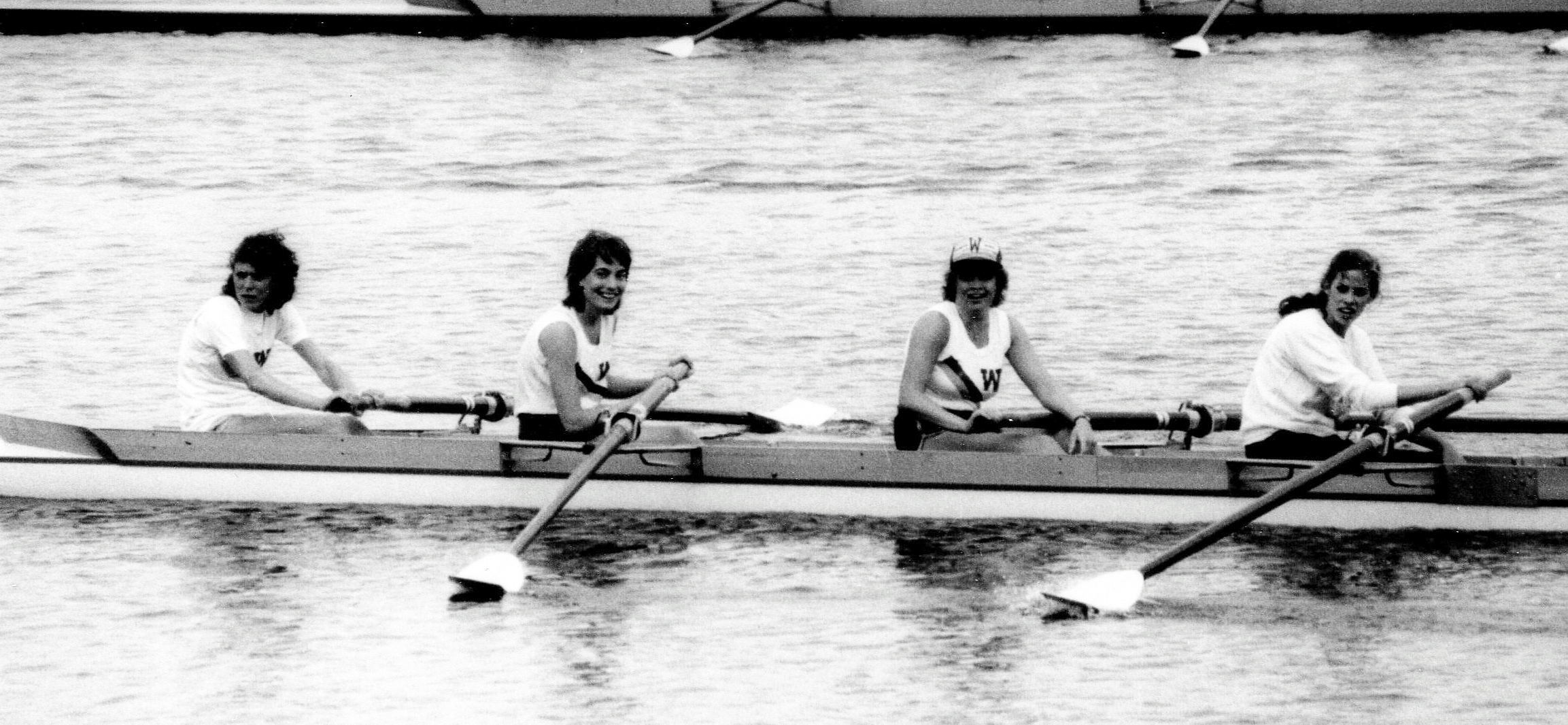
Author Arden Clise, second from left, at a UW crew regatta

